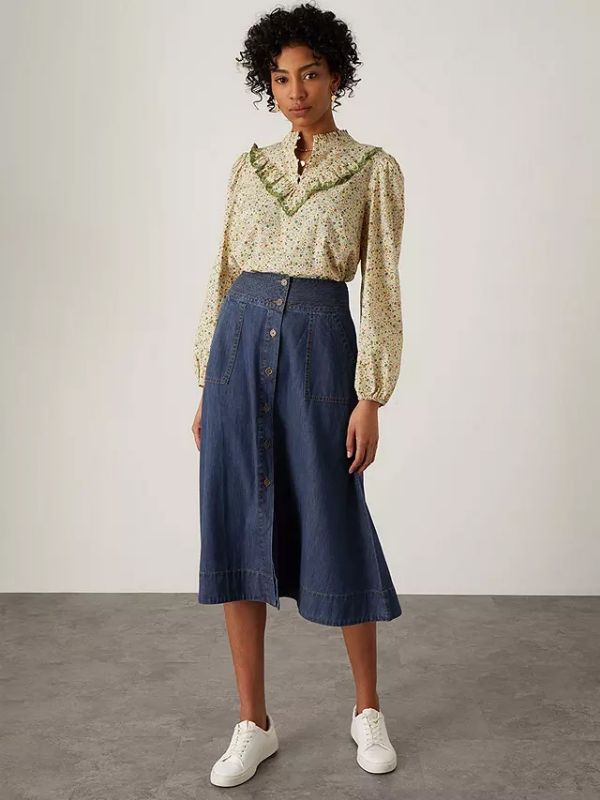- Home
- News, Articles & Reviews
- All Health & Beauty
- Looking Good, Feeling Great
- Medical Health
- Mirror Mirror on the Wall
- Style & Fashion
- General
- Vintage & Sustainable Fashion
We are hiring! Please click here to join our growing magazine delivery team in Gloucestershire!
Areas
Health & Beauty
Archive

Facts about fabrics
All Areas > Health & Beauty > Vintage & Sustainable Fashion
Author: Lynda Rowland, Posted: Thursday, 18th May 2023, 15:30
It is both fascinating and increasingly important to have some knowledge of the provenance of the materials used to create the clothes we wear, but it’s not always possible to trace the fibres right back to where they originate from, investigate the environment they are grown in, and look at the conditions that surround their production.
All this would seem like rather an intensive exercise to factor in on one of your regular shopping sprees so, hopefully, the information here will give you an idea of what to look out for when you are choosing what to buy and where from, to maintain a sustainable summer wardrobe.
In the case of cotton, the term ‘organic’ is crucial, both in terms of its impact on the planet and the conditions it imposes on everyone involved in the production and processing chain. Although all cotton is produced from the same plant, toxic chemicals and artificial fertilisers have no place in the creation of organic cotton, whereas regular non-organic cotton relies on harmful chemicals in its production process. It also often comes from genetically modified seeds and is harvested by machinery which creates excessive carbon emissions – and it requires more water to grow effectively.
Man-made fabrics such as polyester and nylon contain micro-plastics and petro-chemicals, which are damaging to the environment both during the production process and once they are discarded, as they will inevitably end up in landfill and do not break down naturally.
Viscose is a semi-synthetic fabric which is less environmentally damaging than polyester but is unfortunately also less durable. Consequently there is an argument for re-using and re-cycling polyester instead of making viscose garments, as this will create less environmental damage than creating more and more new viscose clothes with the consequence of having to replace them frequently. As we know, second-hand, pre-loved shopping is a great route to sustainability!
Cellulose fabrics are also man-made, but derive from wood pulp, and this category includes such materials as Tencel and Lyocell. Most producers of these fabrics and the companies that sell them will have good credentials in term of forestry programmes, and should generally have excellent sustainability plans and ethical practices in place.
Companies using environmentally friendly fabrics are also likely to use linen, made from flax which is organically grown and is 100% biodegradable, as well as hemp, which is made from fibres from the stalks of the cannabis plant. While linen is a natural fabric, it is mainly considered a summer material as it is lighter and more limited in its use than hemp.
Hemp has a soft and comfortable feel but is more durable and adaptable to the ambient temperature than linen. It is also a relatively fast-growing plant, meaning the crop can be harvested more quickly, thus involving less land and water for its cultivation. Everything from jackets and trousers to light-weight blouses and summer skirts can be made from hemp.
Sustainably produced denim, which uses less water than conventional denim, and fewer chemicals in its dyeing process, is another all-year round wardrobe staple. Look for examples from companies such as People Tree, Baukjen and Thought Clothing.
This spring/summer season sees not just the continued popularity of jeans, denim jackets and shirts, but also a resurgence of dungarees, boiler suits and denim skirts. This year’s skirt shapes range from straight cut pencil styles to a more seventies inspired and easier to wear A-line or tiered style in a midi length. Pair a skirt like this with a peasant blouse in organic cotton and perhaps some rope-soled espadrilles, and your chic, cool and casual look will be as appealing as a summer breeze.Copyright © 2025 The Local Answer Limited.
Unauthorized use and/or duplication of this material without express and written permission from this site's author and/or owner is strictly prohibited. Excerpts and links may be used, provided that full and clear credit is given to The Local Answer Limited and thelocalanswer.co.uk with appropriate and specific direction to the original content.More articles you may be interested in...


© 2025 The Local Answer Limited - Registered in England and Wales - Company No. 06929408
Unit H, Churchill Industrial Estate, Churchill Road, Leckhampton, Cheltenham, GL53 7EG - VAT Registration No. 975613000You are leaving the TLA website...
You are now leaving the TLA website and are going to a website that is not operated by us. The Local Answer are not responsible for the content or availability of linked sites, and cannot accept liability if the linked site has been compromised and contains unsuitable images or other content. If you wish to proceed, please click the "Continue" button below:




